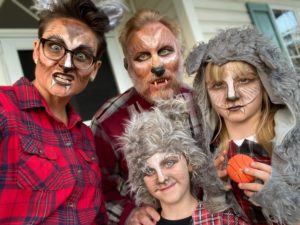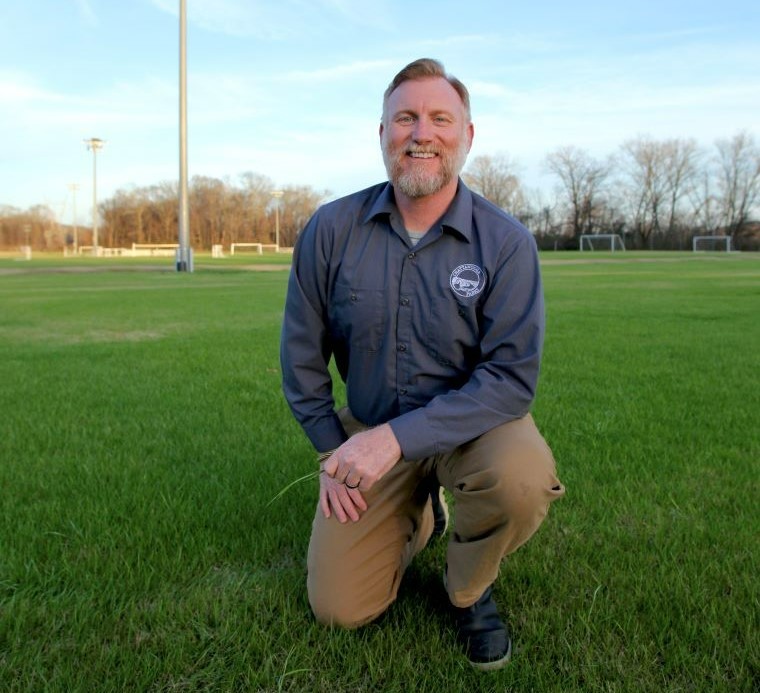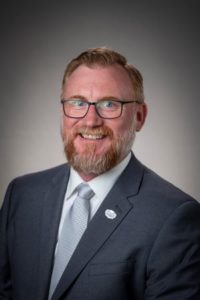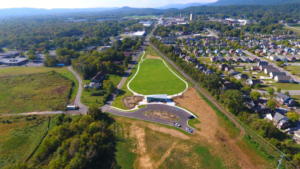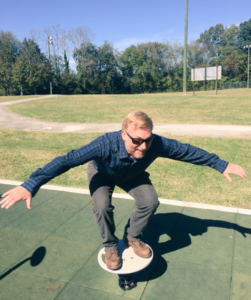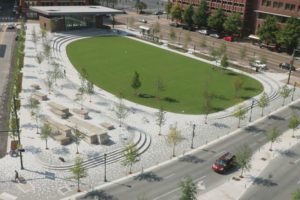By John Kmitta
“When we call it a rebrand, it truly is a rebrand,” said Sports Field Management Association President, James Bergdoll, CSFM, CPRP, of the new moniker, and new direction, for the association. “We are no longer the Sports Turf Managers Association that I joined in 2004. We have a different membership. We have a different need to get us to the next level. We have done a really good job communicating and educating ourselves internally. Now we need to focus that energy outside our organization. We still struggle with being considered professionals, the go-to people, and experts at what we do. We are a much more technically skilled group of people than someone who just sits on a mower. It’s time for us to drive that point out there.”
According to Bergdoll, who serves as director of parks maintenance for the City of Chattanooga (Tenn.) Department of Public Works, the association rebrand is something that has been in the works for quite some time, as the association has worked to move away from the term “turf,” which has become heavily associated with synthetic turf. The fact that the association purchased the naming rights and resources of SportsField Management, and features the Certified Sports Field Manager program, has helped drive the association toward its new name, which was reaffirmed by a member survey in which the overwhelming majority chose the name Sports Field Management Association.
As the association embarks on this new era and begins to shape its new vision, the person leading the way is the association’s new president.
Humble beginnings
James Bergdoll grew up in Madison, Ind., a picturesque town of around 12,000 people, situated on the Ohio River, approximately halfway between Louisville, Ky., and Cincinnati, Ohio. He comes from a small, working-class family – just him, his parents, and one older sister. His father is retired military – having served as a member of a maintenance and operation team in the Indiana Air National Guard on an air gunnery range near Madison – and his mother worked in various administrative roles at a local manufacturer.
Growing up, Bergdoll played sports, was active in Scouts (all the way through Eagle), and enjoyed being outdoors. “Once we got old enough to ride our bicycles, we had a great state park nearby, and had access to it through some of the neighborhoods,” he said. “So, the neighborhood kids and I spent a lot of time climbing rocks and hiking and going under waterfalls.”
That love of the outdoors eventually drove Bergdoll to study wildlife and forestry at Purdue University. During school breaks, he worked at the local state park as a laborer. However, after a few years of studying wildlife and forestry, he decided it was not the career path for him.
After a short stint working at a factory, Bergdoll decided he needed to be outdoors, and took a job as a laborer at Hanover College, a small, private college near Madison. He delivered packages on campus, washed vehicles, worked with the grounds crew, and eventually assisted with the athletic fields.
“I didn’t really know what I was doing, but I could do what I was told,” said Bergdoll. “The grounds supervisor was a landscaper and horticulturist by trade, and had a degree from Purdue. He encouraged me to go back to school; so I continued working there for a few years, and then decided to go back to school [at Purdue] and get my degree – in turfgrass this time.”
Bergdoll knew he wanted to work with sports fields – as he enjoyed college athletics and aspired to run the athletic grounds maintenance program for a Division I school – but he also wanted to try his hand at golf course management. The superintendent of Purdue’s two golf courses hired Bergdoll, who worked on the courses for the following year, including during breaks and through the summer.
“I learned a lot and really enjoyed it, but I knew I liked sports turf and wanted to get back to that,” said Bergdoll.
With a little more than a semester remaining before graduation, Bergdoll’s class attended a field day at Victory Field, home of the Indianapolis Indians.
“The whole class was there, but I pulled the head groundskeeper to the side, and told him that I would like to come work for him in the summer if he had an opening,” said Bergdoll. “So I spent that summer at Victory Field under Jamie Mehringer, who was the head groundskeeper at the time. He is, and has been, one of my mentors. The knowledge he passed on to me is where I started and where I came into my own in my career.”
That fall, Bergdoll returned to Purdue for his final semester and worked on Purdue’s athletic fields under superintendent of turf and maintenance, Al Capitos.
Career journey
After graduation, Bergdoll was offered a job in Florida at the Baltimore Orioles spring training facility in Fort Lauderdale, Fla. “I was talking to my girlfriend at the time – now my wife – and she said we should go to Florida, and she would come with me,” he recalled. “So, we packed up all our worldly belongings in a U-Haul and went down at the beginning of February, and spring training started two weeks later.”
However, when spring training was over, Bergdoll quickly found himself bored, as there were few activities on the fields other than a handful of local events. He applied for, and landed, a job at the International Polo Club in the West Palm Beach, Fla., area.
“They had just hired a new director of grounds and facilities, a guy by the name of Ray Mooney, to run the facilities and grounds,” said Bergdoll. “He was a former golf course superintendent who was also a licensed CPA. He was new, and I was new, and neither one of us knew a thing about polo. I knew sports turf and he knew golf turf. It took us a while, but, between the two of us, we figured out a plan that worked for maintaining several hundred acres of polo fields.”
According to Bergdoll, they relied heavily on the operations staff to connect them with polo players to tell them how the field would play.
“How do you find the right playing surface for something you can’t feel yourself?” said Bergdoll. “In other field sports, you can gauge how the field is going to play on your own by footing and feel and using testing equipment. But when you are talking about a 1,200-pound animal, if the field is not safe, it is highly dangerous to people and the animals themselves. It was a really neat experience, and how I fell into it was dumb luck.”
Bergdoll and his wife got married while living in Florida, but decided they wanted to start a family elsewhere. Bergdoll applied to different jobs throughout the southeast, but things weren’t panning out. It was then that Cale Bigelow, Ph.D., from Purdue sent him a listing for a job in Elizabethtown, Ky., where the city was building a 150-acre youth sports complex to be an economic driver for the community.
“They were on the ground floor of developing and planning this complex,” said Bergdoll. “Luckily enough, one of the consultants involved with that planning team talked them into hiring someone with a turf background. The opportunity was amazing – to be able to go in and help finish the planning and design and oversee construction and then turn around and manage the facility. I had to jump on that, and, luckily enough, they offered me the job.”
Bergdoll helped with the final design package that went out to bid, and was there for the construction process. “They built 12 baseball diamonds of different sizes and 12 rectangle sports field (two of which were synthetic turf),” he said. “It was 158 acres – 40 of which were playing fields. It had all the amenities to go with it – huge pavilions with restrooms and concession areas, brick dugouts with short brick walls around the backstops with netting, stadium seating on some fields. I think the whole project was $28 million. They did not hold back.”
Added Bergdoll, “I was able to sit down with the architect and draw out the size shop I wanted, what I wanted in it, and what I wanted around it (materials storage area, an area to store chemicals, fuel pumps for equipment, a lift in the garage space, a break area and a place where we could have meetings with staff, lockers, showers, etc.). And they built it! I was able to order every piece of equipment I wanted. This was a once-in-a-lifetime opportunity. I got to build my team from scratch and bring in some really great people.”
Bergdoll eventually went from being the turf and maintenance superintendent to being the park manager; and, during his tenure in Elizabethtown, he also became a Certified Sports Field Manager (CSFM), and earned his master’s degree in recreation and sports administration from Western Kentucky University.
Having found the role of park manager challenging and rewarding, but feeling burnt out in Elizabethtown, in 2015, Bergdoll took the job as director of parks maintenance for the City of Chattanooga.
“In youth sports I felt like I was serving a very small group of people. I needed something different,” he said. “Coming to Chattanooga, the city had gone through some reorganization and had separated the old parks and recreation department. Park Maintenance had been placed in the Department of Public Works. There was not much structure or leadership, and that’s what they needed. I thought it would be an interesting challenge to rebuild a program that needed restructuring.
“We had a long road ahead of us to cycle through some old ways of doing things and find a new path,” he added. “There were a rough few years, and then it all started to click. We still have some strides to make, so the challenge is still there, and the passion is still there. Chattanooga has been great.”
With a new mayor and new city administration in place this past year, Bergdoll’s group is now part of Chattanooga’s newly formed Parks and Outdoors Department, overseeing anything related to the outdoors, outdoor sports, and special events.
“I take pride in my unique career path,” he said. “I have let my career and opportunities take me places. I have a very diverse resume. I have been very blessed to have the opportunities that have come my way.”
According to Bergdoll, hard work pays off, and people will notice if you are working hard every day. He added that the keys to success are being able to adapt, being able to be flexible, being able to overcome challenges, and being able to keep a level head at a time of adversity.
Bergdoll’s biggest challenge on the job is making sure each of his 45 employees is moving in the right direction.
“If you work in the realm of supervision and management, that’s why you do it,” he said. “Something I work on all the time is trying to be a better communicator. My job is to motivate them and lead them.”
But despite the challenges of the job, the reward is that every day it is different and the work his team does impacts a lot of people – not just daily users, but people who come to Chattanooga for special events.
“We are going out there and planting pollinator patches in parks, and community centers, trying to educate the public, working with volunteers to pull invasive plant species,” he said. “It’s meaningful. I truly feel like a public servant. Going back to my dad being a career military person. I can’t put myself up against a veteran, because I have never served my country in that capacity; but I do serve my community, and that makes me feel better about going to work every day. The best thing in the world is seeing a smiling kid on a playground or sports field.”
Giving back to the industry
In addition to serving his community, Bergdoll has long served the sports field management industry and the association in various capacities. He became a member of STMA (now SFMA) while still in college, and he credits the association with helping him get to where he is at in his career.
“When I was younger and starting out in this career, I would go to events or read the magazine and I wanted to emulate what other people were doing,” he said. “I hope that I can pass that along to those who see me in a level of leadership and try to project that same feeling on to them.”
Despite being a member since his days at Purdue, it wasn’t until he got a call from David Pinsonneault, CSFM, inquiring about his interest in board service that Bergdoll put his hat in the ring for a position on the board of directors.
“I hadn’t really thought about it, but I realized I was interested,” said Bergdoll. “So, I got elected to the board, and that has been an amazing and eye-opening experience. It has kept me in tune with my passion, which is athletic fields, and how I can help other sports field managers.
“In the role that I’m in now, I feel like I can be a better voice for the people who are out there working on the fields every day,” he added. “I’ve been there. I have worked from the bottom. I started at an $8.50-an-hour job and worked my way up to director of an organization of 45 employees, and we have more than 100 sites that we maintain.”
According to Bergdoll, serving on the board has been humbling, but an honor. “If you surround yourself with like-minded people who are passionate and driven, then you can’t help but be passionate and driven,” he said. “Every time I go to a board meeting, or to conference or a local meeting, I come away recharged.”
Bergdoll is proud of many achievements the board of directors has made in recent years, including setting the association up to face financial challenges, such as those brought on by the COVID-19 pandemic; the Best Management Practices guide the association created; and the development of the Sports Field Management 101 education program.
Taking the lead
Now, as president of the association, Bergdoll’s vision is to help members to become better professionals.
“We want to educate folks on the basics of sports field management, but we also want to help them get to the next level,” he said. “That includes being able to have conversations with the people you work for – athletic directors, city councils, team ownership or team management – about why we do what we do, why we need certain things, or why we need to hire more.
According to Bergdoll, taking professionalism to the next level goes beyond what is learned in school.
“When studying turfgrass and soil science, there are certain things you learn, but it doesn’t necessarily make you a good manager or spokesperson for what is needed to create awareness in our own workplaces or communities about the importance of having professionally maintained sports fields,” he said. “We’ve done a great job of communicating to ourselves, but we still lack the awareness in the general public of where we would like to be.”
Bergdoll added that there needs to be better recognition that the people in this industry are educated, hardworking professionals who provide safe playing fields – and that there is a science behind it.
“It’s about improving our position as the go-to people for sports field and facilities management,” he added.
Another goal of Bergdoll’s is to find the people to come into the career to expand upon all the advancements that have been made during the last 15 to 20 years. Part of that effort includes staying on the on the cutting edge with new ideas and technology that will hopefully be of interest to the younger generation.
However, in addition to getting new people into the industry, it is also important to get those who are already in the industry more involved. According to Bergdoll, in a volunteer, membership-driven organization, members get out of it what they put into it. To elevate the profession, and elevate themselves as professionals, members need to be involved and bring new ideas to the table.
“The other part of my vision is to look at diversity in our industry,” said Bergdoll. “If you look at the demographics of the professionals in our organization, it is pretty one-sided. We need to have conversations about how to reach out to underrepresented folks who could potentially be in the industry, if they are not already. Not only does that help us grow, but it helps us to be better professionals. We need to take a hard look at that. It will make us a better, stronger organization. You look at the board and the slate of candidates that we have, and it is white male dominated. It’s time to make an effort to represent everyone and bring underrepresented groups to the table. One thing we are looking at is hiring a diversity consultant to help us navigate that, because we know that it’s needed, but we don’t know how to do it; we need help, and we are not afraid to recognize that. It is going to take someone with experience to help develop that program.”
Bergdoll is well aware that many of the issues facing the industry are big-picture, long-term challenges – bigger than what one person can solve in one year as association president. But he wants to be sure to get off to a good start this year with the association’s new strategic plan.
“That was a group project as a board to get into place,” he said. “It is going to be important to see us get off on the right foot. We say it’s a 10-year plan, but the first few years are critical to set the tone and lay the foundation for the years to come. My goals are the goals of the strategic plan – not the goals of James Bergdoll, but the goals of the association. The rebrand, the unveiling, and then what we do after that to maintain that momentum is going to be very important. As president, I will be out there leading the charge in whatever way I can.”
John Kmitta is associate publisher and editorial brand director of SportsField Management magazine.
Special Thanks
By James Bergdoll, CSFM, CPRP
There are many people who have influenced my life and career. The list is long, but there have been a lot of people along the way.
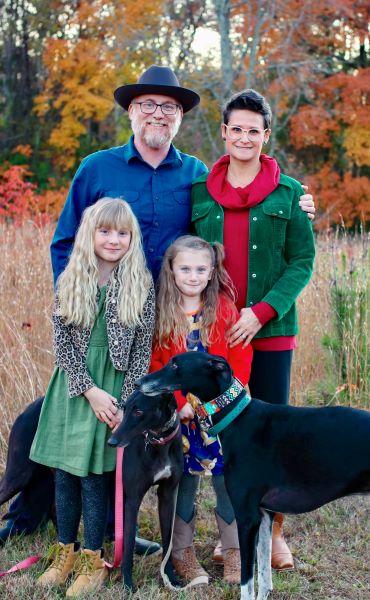
First and foremost, I need to recognize and thank my family, especially my wife, Amber, who has been alongside me from almost the beginning of my career in sports fields. Her love and support, along with our girls, Lucinda and Daphne, make it worth getting out of bed every day!
John Anderson for encouraging me to go back to school and hitting me with “Can you believe they pay us to do this?” while planting flowers one day.
The folks at Purdue – Dr. Zac Reicher, Dr. Cale Bigelow, Dr. Aaron Patton, Dr. Kristie Walker, Jim Scott and Al Capitos – for giving me a chance and learning opportunities (Cale especially for mentoring and still being a friend still after all these years, and Aaron for making me wear a tie). My sports field classmates – Joey Stevenson; Dan Mudd; Brian Bornino, CSFM; Zac Peterson; Eric Haub; and Nick Lievense – for inspiring me and being my friends.
Summer ‘05 Vic team, Jamie, Herm (Jeff Hermesh) and Tito (Jason Stevens) – what a fun summer. Jamie Mehringer for being a mentor, someone whom I can bounce ideas off of, and friend.
Ray Mooney and the IPC team for helping me find my place as a manager and leader.
Charlie Bryant and Ed Poppe with the City of “Etown” for believing in me, trusting me, and mentoring me in the world of local government.
All the other Kentuckiana folks who helped me somehow, inspired me, and befriended me: Dr. Gregg Munshaw; Brad Nevitt; Marcus Dean, CSFM; Andy Bird, CSFM; Joe Lyons; Craig Sampsell, CSFM; Seth Flener; Seth Breitner; Anna Johnson; Aaron Boggs; Chris Pearl; Tod Shafer; Tom Breedan; Chris Parks; Doug Vescio; Sam Montgomery; Dan Gamble; Craig Mylor; Bucky Trotter; Chad Lavender; Chris Larbes; Zac Burns; Dr. Paul Woosley; Carla Hagen; Bill Marbet; and TJ Derrick. #foodiesofturf everywhere! Special thanks to Dr. AJ Powell and Darrin Daily, who we all miss dearly. Eric Harshman, my cousin and friend; I am so proud of your success! Tom Nielsen – I’m not part of the Nielsen mafia directly, but an honorary member, I hope – thanks for all your inspiration to be great.
And all the people that have inspired me, talked to me, listened to me, helped me, and are just overall great folks I have connected with through the SFMA or worked with over the years – I owe you all in helping with my success. All board members over the last four years, especially Sarah Martin, CSFM; Jody Gill, CSFM; Tim VanLoo, CSFM; Jimmy Simpson, CSFM; Nick McKenna, CSFM; Sun Roesslein, CSFM; Boyd Montgomery, CSFM, CSE; and Matt Anderson, CSFM. Kim Heck and her staff – Leah, Kristen, Nora, Whitney and Kenzie. Abby McNeal, CSFM, CPRP; Dr. Mike Goatley; David Pinsonneault, CSFM, CPRP; Chad Price, CSFM, CFB; Mike Trigg, CSFM; Dale Getz, CSFM; Jeff Salmond, CSFM; Marty Kaufman, CSFM; Mike Boekholder; Brian Winka, CSFM; Don Kaib; Dan Blank; Chad “Goat” Laurie; Steve Berg, CSFM; Zach Johnson; Ray Sayre, CSFM; Tom Burns; Grant McKnight and the DuraEdge team (Jamie, Coby, Cam and JoDee). TVSTMA folks Stephen Callis; Byran Farris, CSFM; Ryan Storey, CSFM; John Wagnon, CSFM; John Clintsman; Alex Vaughn and RiverCity Athletic Fields; Dr. John Sorochan, Dr. Jim Brosnan and the UT Turfgrass team!
Last, but certainly not least, is Justin Holland and the leadership of Chattanooga Public Works for taking a chance and believing in me. To my team here in Chattanooga – Morgan, Anna, Chase, Jay, Napoleon, and Sofia – you are all very passionate and capable people, and it’s a pleasure working alongside all of you.
I am sure there are countless others I am forgetting to include. If I did, I am truly sorry, but I thank you all for being a part of my life and career!
